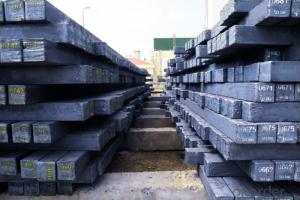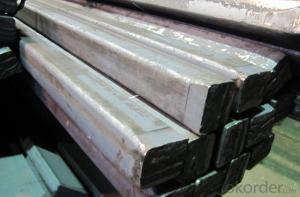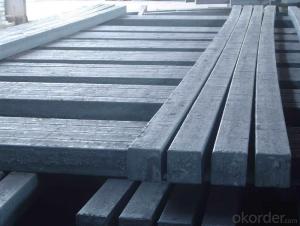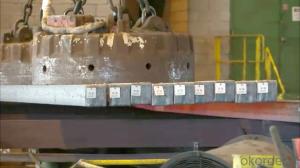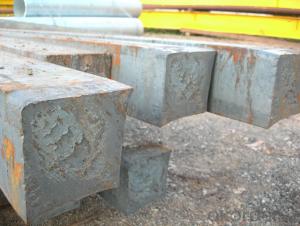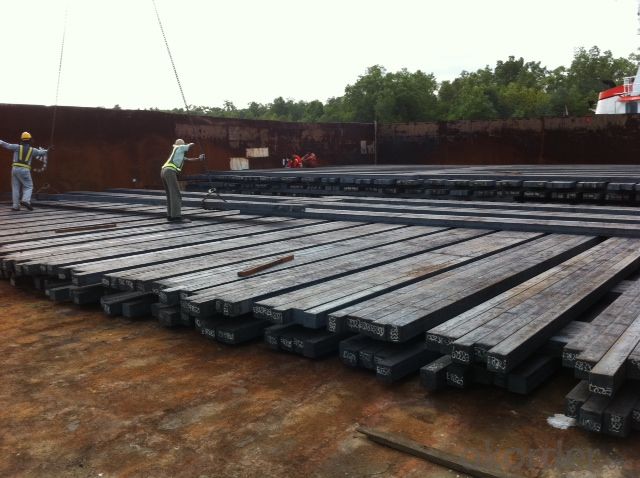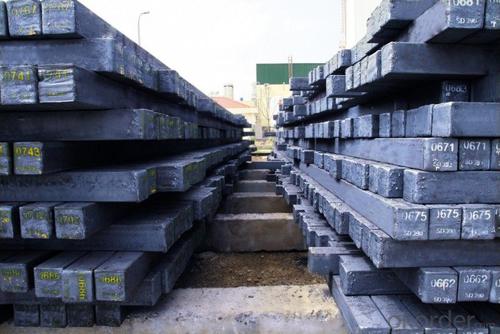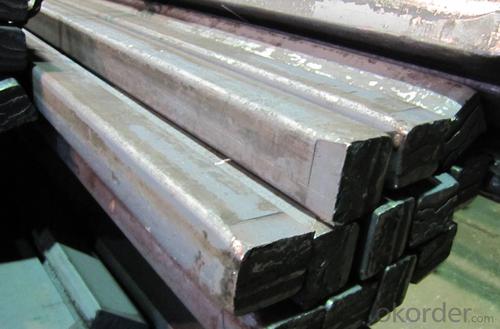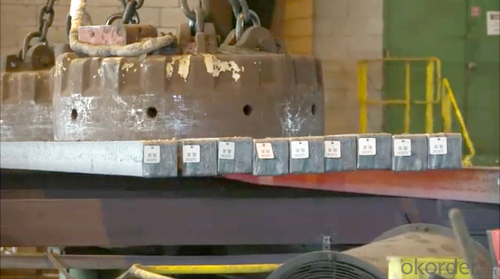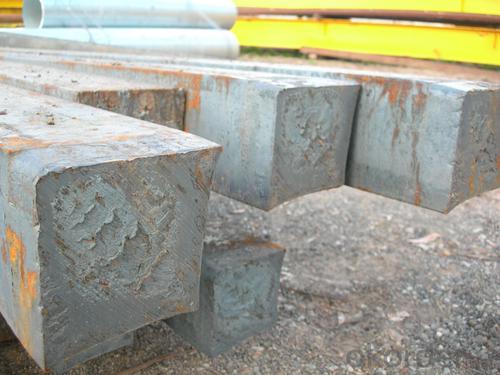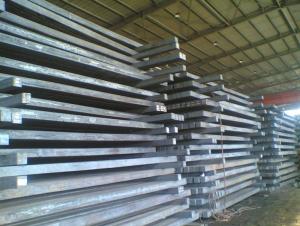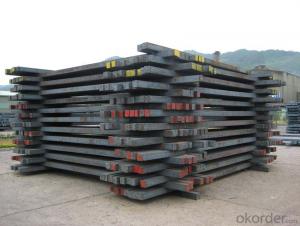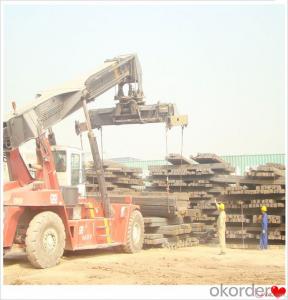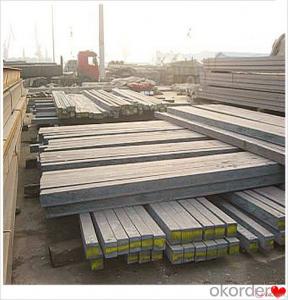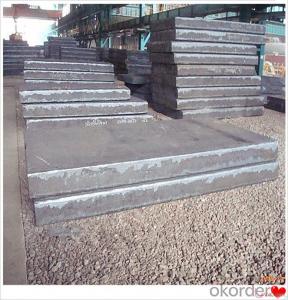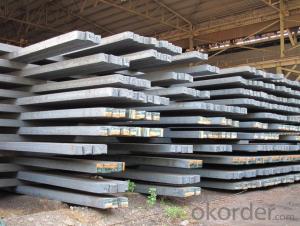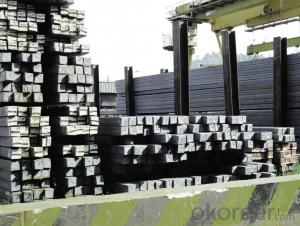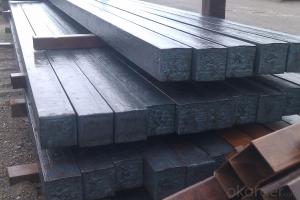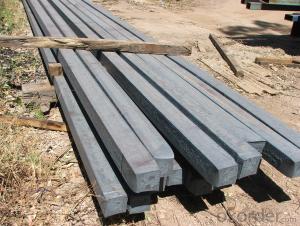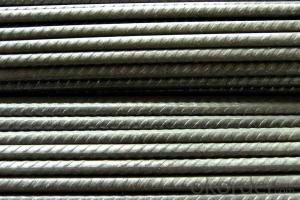Prime Q275 150mm Square Alloy Steel Billet
- Loading Port:
- Shanghai
- Payment Terms:
- TT OR LC
- Min Order Qty:
- 100 m.t.
- Supply Capability:
- 10000 m.t./month
OKorder Service Pledge
OKorder Financial Service
You Might Also Like
Structure of Prime Q275 150mm Square Alloy Steel Billet
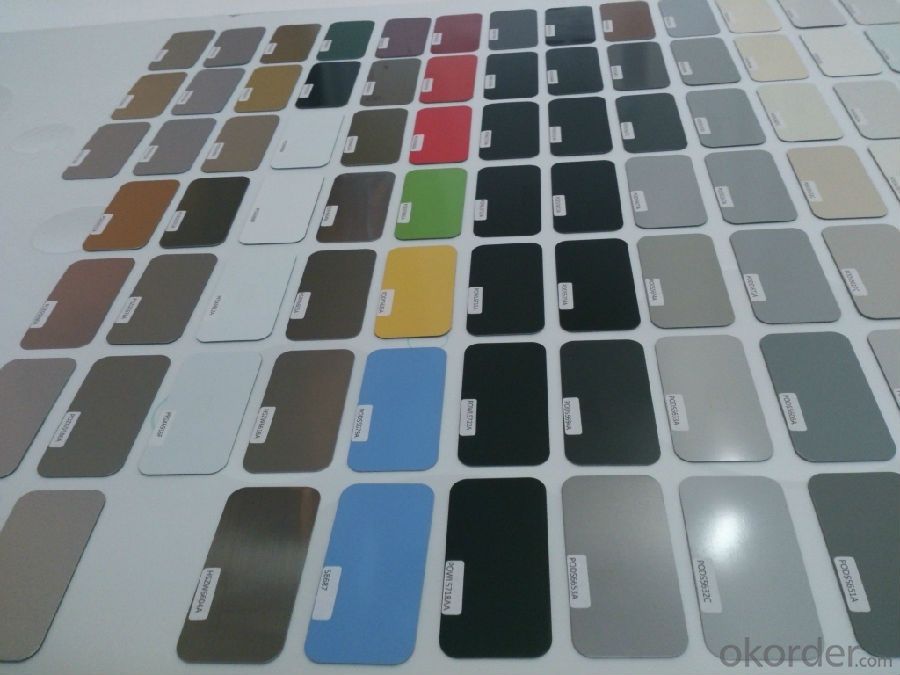
Description of Prime Q275 150mm Square Alloy Steel Billet
1. Prepainted steel coil is coated with organic layer, which provides higher anti-corrosion property and a longer lifespan than that of galvanized or galvalume steel sheets.
2. The base metals for prepainted steel coil consist of cold rolled, HDGI Steel, electro-galvanized and hot-dip alu-zinc coated steel. The finish coats of prepainted steel coil can be classified into groups as follows: polyester, silicon modified polyesters, polyvinylidene fluoride, high-durability polyester, etc.
3. The production process has evolved from one-coating-and-one-baking to double-coating-and-double-baking, and even three-coating-and-three-baking.
4. The color of the prepainted steel coil has a very wide selection, like orange, cream-colored, dark sky blue, sea blue, bright red, brick red, ivory white, porcelain blue, etc.
5. The prepainted steel coils can also be classified into groups by their surface textures, namely regular prepainted sheets, embossed sheets and printed sheets.

Main Feature of Prime Q275 150mm Square Alloy Steel Billet
They were one of several reasons for the wind to be taken out of the sails of the recent oil price momentum. Kuwait’s oil minister said that his country would only commit to a production freeze if all major producers are involved, including Iran. We also had Goldman telling us that oil markets will not rebalance at $40/bbl as it throws a lifeline to cash-strapped US producers.
If it is talk of a production freeze that is behind the rally it shows how low expectations have fallen. It is in the nature of oil people to talk the market up. Any bullish crumb is given exaggerated significance and any port in a storm will do. It is all but fact that the oil market will be tighter in the second half of this year when seasonal demand shoots up and US production continues to decline. It was the same picture last year. If OPEC and key non-OPEC production is frozen that will ensure the daily surplus will fall, but in all likelihood there will still be a surplus and there is an enormous global stockbuild to burn off.
Applications of Prime Q275 145mm Square Alloy Steel Billet
A. Corrugated design makes it excellent waterproof performance
B. Materials as prepainted steel sheets, galvanized steel sheets, galvalume (Al-Zn coated sheets) are available to make corrugated sheet.
C.Those material are durable, anti-corrosion in bad weather for 20-30 years based on it's Zinc(Galvanized) coating or AZ (Galvalume) coating.
D. Different shape of the sheet make it suitable for any style of buildings.
E.Easy to install, no need special tools to fix the sheet.
F.Light weight due to high strength to weight ratio of steel. Light weight means easier handling lower shipping costs, easier installation
G. Different color is availbe base on the RAL Standard make your building more beautiful.
H. We will provide the best solutions if you don't have a exact idea of the specification you want for the steel sheet based on your weather conditions, engineering structure, construction budget and so on.
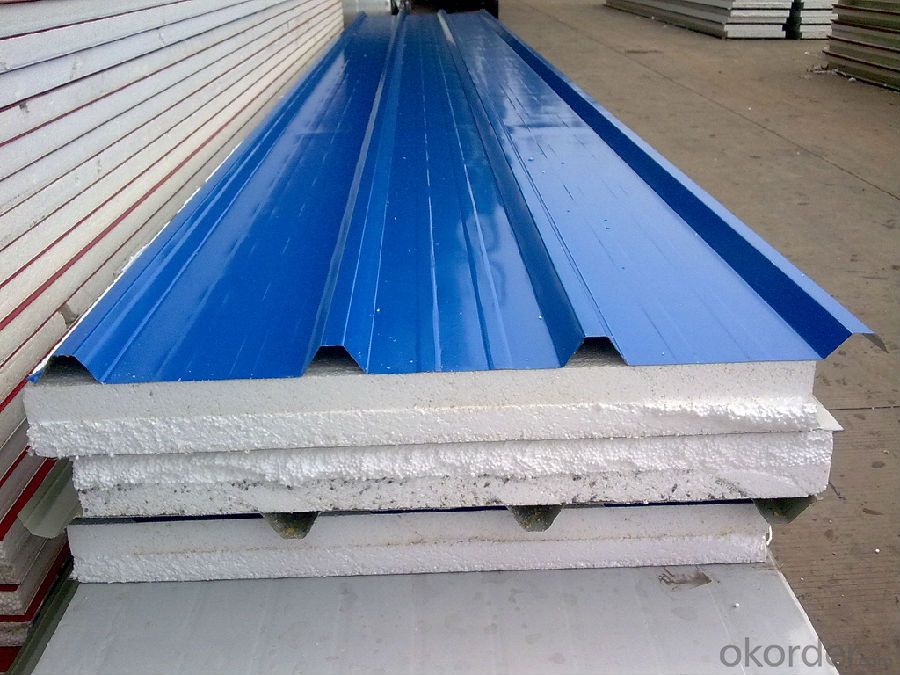
Specifications of Prime Q275 150mm Square Alloy Steel Billet
Product | Billet |
Material Grade | SGCC / SGCH / DX51D+AZ, etc |
Thickness | 0.6-3.0mm |
Width | 500-1500mm |
Tolerance | Thickness: +/-0.02mm , Width:+/-2mm |
Zinc-coating | Z30-150g/m2 |
Technique | Raw material: Hot rolled steel coil --> Cold rolled_>hot dipped galvalume |
Surface | Dried, Chromated, Unoiled |
Spangle | Regular spangle , small spangle, zero spangle |
ID | 508MM 610MM |
Coil weight | 1-25MT |
Export package | Cardboard inner sleeves, Waterproof paper, galvanized steel covered and steel strip packed |
FAQ of Prime Q275 150mm Square Alloy Steel Billet
We have organized several common questions for our clients,may help you sincerely:
1. How Can I Visit There?
Our company is located in Tianjin City, China, near Beijing. You can fly to Tianjin Airport Directly. All our clients, from home or aboard, are warmly welcome to visit us!
2. How Can I Get Some Sample?
We are honored to offer you sample.
- Q: How are steel billets used in the manufacturing of kitchen appliances?
- Steel billets are used in the manufacturing of kitchen appliances as the primary raw material. These billets are heated and then shaped or molded into various components such as bodies, frames, handles, or cooktops, which form the structural foundation of kitchen appliances. The high strength and durability of steel make it an ideal choice for withstanding the rigors of everyday use in kitchen appliances, ensuring their longevity and quality.
- Q: How do steel billets contribute to the construction of bridges and infrastructure?
- The strength, versatility, and durability of steel billets make them crucial in the construction of bridges and infrastructure. These cylindrical bars of steel are created through a process known as casting, where molten steel is poured into molds and allowed to cool and solidify. A primary benefit of steel billets in bridge construction is their ability to bear heavy loads. Bridges face substantial weights from vehicles, pedestrians, and natural forces like wind and earthquakes. Steel billets, with their remarkable strength and structural integrity, provide the necessary support to withstand these loads and ensure the bridge's safety and stability. Additionally, steel billets offer flexibility in design and construction. Their malleability allows for easy shaping and forming into various structural components, such as beams, columns, and girders, which are vital in bridge construction. This flexibility empowers engineers to create innovative designs and optimize material usage, resulting in cost-effective and efficient bridge structures. Another significant advantage of steel billets is their resistance to corrosion. Bridges endure harsh environmental conditions, including moisture, saltwater, and pollution. Steel billets can be treated with protective coatings or alloyed with elements like chromium or nickel to enhance their corrosion resistance. This guarantees the bridge's longevity and durability, reducing maintenance costs and extending its lifespan. Moreover, steel billets contribute to the speed of bridge construction. As they are prefabricated in steel mills, they can be produced in large quantities and transported to the construction site, ready for assembly. This prefabrication process minimizes on-site construction time, reducing traffic disruption and shortening the overall project duration. In conclusion, steel billets are essential in the construction of bridges and infrastructure due to their high load-bearing capacity, flexibility in design and construction, resistance to corrosion, and ability to expedite construction. Their contribution ensures the safety, longevity, and efficiency of bridge structures, making them a vital component in the development of robust and reliable infrastructure systems.
- Q: How are steel billets used in the manufacturing of furniture and fixtures?
- Steel billets are used in the manufacturing of furniture and fixtures as they serve as the raw material for various components. These billets are shaped, cut, and molded to create the desired parts and structures, such as frames, legs, and supports. The high strength and durability of steel make it a popular choice for furniture and fixture manufacturing, ensuring long-lasting and sturdy products.
- Q: How are steel billets used in the production of wire rods?
- Steel billets are a crucial raw material in the production of wire rods. These billets, which are cylindrical in shape, serve as the starting point for the wire rod manufacturing process. The process begins with the heating of steel billets in a furnace to achieve the desired temperature for hot rolling. Once heated, the billets are passed through a series of rolling mills, where they undergo a process called hot rolling. This process involves passing the billets through a set of rollers that gradually reduce their diameter, while increasing their length. As a result, the billets transform into long, thin, and continuous wire rods. During hot rolling, the steel billets undergo plastic deformation, meaning that their shape changes under the application of heat and pressure. This process helps to align the internal grain structure of the steel, resulting in improved mechanical properties such as strength, ductility, and toughness. After the hot rolling process, the wire rods are typically coiled and cooled. They may then undergo further treatments such as pickling, surface coating, or heat treatment to enhance their quality and suitability for specific applications. Finally, the wire rods are ready to be used in various industries, such as automotive, construction, and manufacturing, for the production of a wide range of products, including wires, cables, nails, screws, and reinforcement bars. In summary, steel billets are transformed into wire rods through the process of hot rolling. This process involves heating the billets, passing them through rolling mills to reduce their diameter and increase their length, and then further treating and cooling them. The resulting wire rods are used in a multitude of applications, making them an essential component in the production of various products.
- Q: What are the properties of alloy steel billets?
- Alloy steel billets possess a combination of properties that make them highly desirable for various applications. These properties include high strength, excellent hardness and wear resistance, good toughness, and improved corrosion resistance compared to carbon steel. Additionally, alloy steel billets have the ability to withstand high temperatures and exhibit excellent machinability, making them ideal for use in industries such as automotive, aerospace, construction, and manufacturing.
- Q: How are steel billets used in the production of automotive frames?
- Steel billets are used in the production of automotive frames as they are heated and shaped into desired forms, such as beams or plates, which are then welded together to create the structural framework of a vehicle.
- Q: What are the potential applications of steel billets in the food and beverage industry?
- Steel billets have numerous potential applications in the food and beverage industry. One of the main uses is in the production of stainless steel equipment, such as tanks, vessels, and processing machinery. Stainless steel is a preferred material in the food and beverage industry due to its corrosion resistance, durability, and hygienic properties. Steel billets are often used to manufacture stainless steel pipes and fittings, which are essential components in food and beverage processing plants. These pipes and fittings are used for conveying fluids, gases, and food products, ensuring a safe and reliable transportation system. In addition, steel billets can be used to produce stainless steel bar and rod, which are used in various applications such as kitchen equipment, cutlery, and utensils. Stainless steel bar and rod are highly resistant to staining, rusting, and chemical corrosion, making them ideal for use in food preparation and serving. Furthermore, steel billets can be used to manufacture stainless steel sheets and plates, which are used for food storage and packaging. Stainless steel sheets and plates provide a hygienic and durable surface for food storage containers, countertops, and shelving units. They are easy to clean, resistant to bacterial growth, and do not react with acidic or alkaline food products. Overall, steel billets play a crucial role in the food and beverage industry by providing the necessary raw material to manufacture stainless steel equipment, pipes, fittings, bar, rod, sheets, and plates. The use of stainless steel enhances food safety, ensures product integrity, and contributes to the efficient and hygienic operation of food and beverage processing facilities.
- Q: How are steel billets used in the manufacturing of chemical processing equipment?
- Steel billets are used in the manufacturing of chemical processing equipment as raw material for forging or casting various components such as valves, pumps, heat exchangers, and reactors. These billets are shaped, machined, and treated to meet the specific requirements of the equipment, ensuring strength, durability, and resistance to corrosion and high temperatures.
- Q: How are steel billets used in the manufacturing of agricultural machinery?
- Steel billets are an essential component in the manufacturing of agricultural machinery. These billets, which are semi-finished steel products, serve as the raw material for various parts and components used in agricultural machinery. One of the primary uses of steel billets in the manufacturing process is for forging and casting. Forging involves heating the billets to a high temperature and then shaping them using mechanical pressure, while casting involves pouring molten metal into a mold. Both processes allow for the creation of complex and durable components that are necessary for agricultural machinery. Steel billets are used to manufacture a wide range of agricultural machinery parts, such as engine components, transmission gears, axles, and hydraulic cylinders. These parts require excellent strength, durability, and resistance to wear, which steel billets provide. Additionally, steel's high tensile strength ensures that the machinery can withstand the demanding conditions of agricultural operations. Moreover, steel billets are used for manufacturing the frames and chassis of agricultural machinery. The frames need to be robust to support the weight and withstand the stress and vibrations generated during operation. Steel billets allow for the creation of sturdy and rigid frames that ensure the longevity and structural integrity of the machinery. Furthermore, steel billets are utilized in the production of cutting and harvesting tools, such as blades, discs, and plowshares. The exceptional hardness and sharpness of steel make it an ideal material for these tools, enabling efficient and precise agricultural operations. In summary, steel billets play a crucial role in the manufacturing of agricultural machinery. Their versatility, strength, and durability make them a suitable material for various components and parts, ensuring that the machinery can withstand the demanding conditions of agricultural operations and perform efficiently.
- Q: What are the different types of steel billet reheating furnaces?
- There are several types of steel billet reheating furnaces, including walking beam furnaces, pusher furnaces, rotary hearth furnaces, and roller hearth furnaces. Each type has its own advantages and uses, depending on the specific requirements of the steel production process.
Send your message to us
Prime Q275 150mm Square Alloy Steel Billet
- Loading Port:
- Shanghai
- Payment Terms:
- TT OR LC
- Min Order Qty:
- 100 m.t.
- Supply Capability:
- 10000 m.t./month
OKorder Service Pledge
OKorder Financial Service
Similar products
Hot products
Hot Searches
Related keywords

